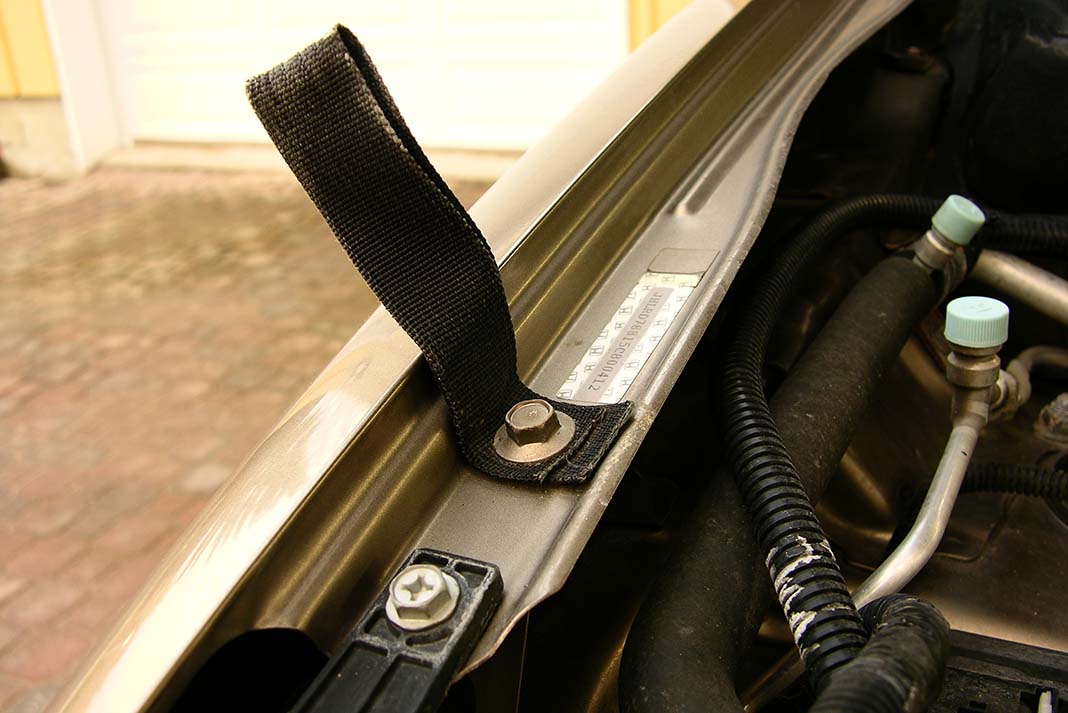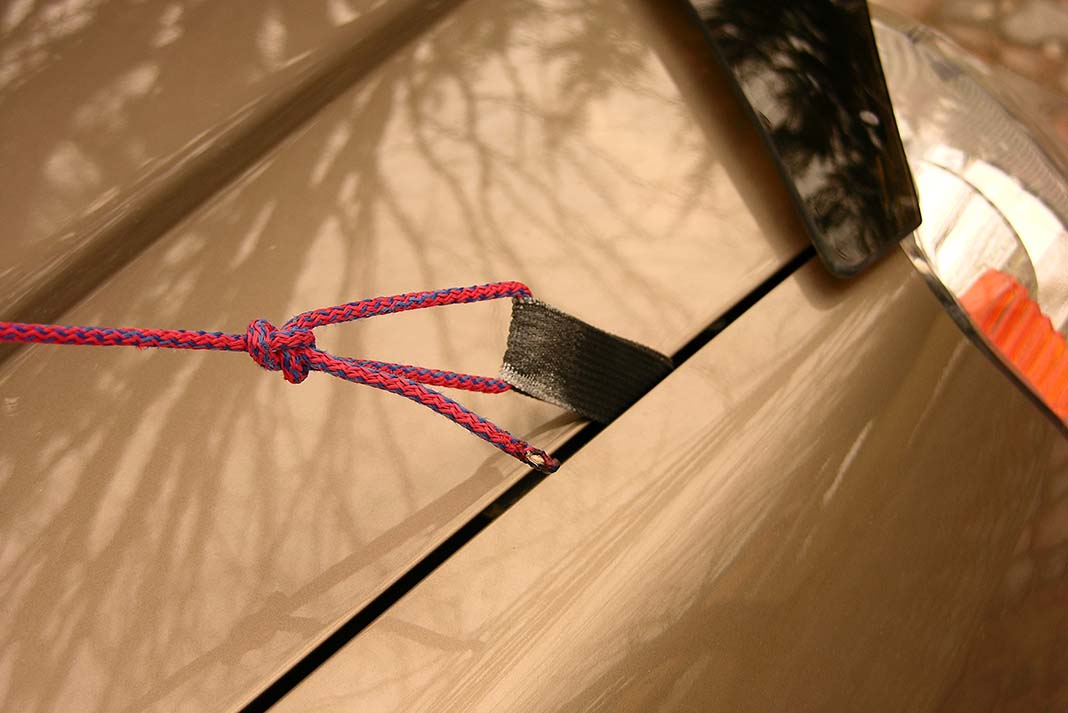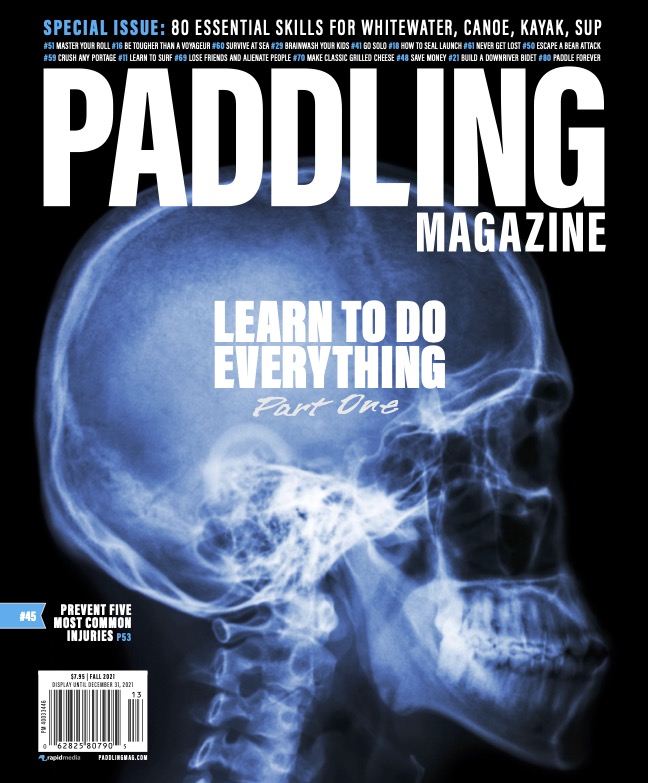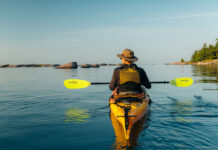Putting a canoe on your car is an important step for successfully making it to the put-in. Whether you are renting a canoe from an outfitter or you have your own gear, you are going to want to learn how to tie a canoe to your car. Read on for simple steps to follow whether you have a roof rack or not.
How to tie a canoe to a car
When it comes to tying a canoe to a car, there are a few different options—it all depends on whether or not you have a roof rack. A roof rack is ideal, because it provides the most secure tie-down. It also reduces the risk of damaging your vehicle. If you don’t have a roof rack there are still other options out there for you.

10 steps to tie a canoe to a roof rack
If your vehicle has a roof rack, you have one of the best situations for tying down a canoe. Follow the steps below to safely secure a canoe to a roof rack.
1 Lift canoe onto rack
Lift the canoe up and onto the rack on the vehicle. This can be done with one person for lower vehicles, but it is always easier and safer when you have two people.
2 Protect the gunwales
If you want to protect the gunwales on the canoe, you can put either foam blocks or cloth between the gunwales and racks of your vehicle.
3 Balance the canoe
Balance the canoe on the crossbars so it does not tip forwards or backwards. Usually, this means the yoke is resting equally between the crossbars. Position the canoe so it is straight and perfectly in line with your vehicle. If it is slightly off-line, the wind will put uneven pressure on one side of your boat the entire drive.
4 Toss cam straps over top
Standing on the passenger side of the vehicle, throw the non-buckle end of your cam strap to the other side of the vehicle. This step can be done for both the front and back strap of the canoe (one for each roof rack bar).
5 Wrap the straps and toss back
On the driver’s side of the vehicle, wrap the strap around your roof rack bars and send the non-buckle side of the cam strap back overtop to the passenger side again. Do this for both the front and back strap.
6 Wrap and buckle the straps
Take the non-buckle end of the cam strap and wrap it underneath the bar on the passenger side and up and through the buckle of the cam strap to begin the tightening process.
7 Tighten the straps
Start with the buckle close to the bottom of the canoe (the highest point when the canoe is upside down) so that you have lots of room to pull the strap tight before the buckle hits the bar. Repeat for both back and front straps.
8 Tie off loose ends
Once these straps are tight, tie off the loose ends so they are not flapping in the wind.
9 Tie bow and stern lines
Finally, you want to secure both the front and back of the canoe with a bow and stern line. Every vehicle is going to have different spots to connect. Many vehicles have built-in attachment points under the front and back of the vehicle. If you don’t, you might want to consider purchasing hood/trunk tie-down loops which can be found at your local paddling shop or on Amazon.
10 Final check
Do one final check to make sure the canoe is well connected to the car and you are all set to go. Try shaking the canoe with two hands—the vehicle should move with it.
5 steps to transport a canoe without a roof rack
If your vehicle does not have a roof rack, there are other ways to secure the canoe to your vehicle. One of the best options is to use foam blocks that can be purchased at your local paddling shop.
1 Add foam blocks to gunwales
While the canoe is on the ground, secure the foam blocks to each end of the canoe halfway between the yoke and the thwarts. Ideally they will be sitting close to the balance points of the canoe.
2 Lift and place canoe
Next, either by yourself or with the help of a friend, lift the canoe up and place it on top of your vehicle. You may need to play around with the location of the foam blocks and the position of the canoe on the top of the vehicle. You do not want it too far forwards or backwards and ideally, it is perfectly balanced on the centre of your roof. This also means looking from the back of the vehicle to ensure the canoe is straight down the middle of your vehicle. If it is slightly off-line, the wind will be putting uneven pressure on one side of your boat the entire drive.
3 Strap it down
Many people will use either cam straps or ratchet straps to secure the canoe to the roof by opening all car doors and actually doing a full wrap inside the vehicle and overtop of the canoe. This can cause damage to the padding around the outside of your door frame. Another option is to use rope and tie a trucker’s hitch knot in order to get the extra leverage to pull the canoe tight to the top of your vehicle.
4 Tie bow and stern lines
Finally, you want to secure both the front and back of the canoe. Many vehicles have built-in attachment points under the front and back bumpers, but using these can cause the rope to rub or scratch your paint. You might want to consider purchasing hood/trunk tie-down loops which can be found at your local paddling shop or on Amazon.
Or, create your own tie-down points by bolting a loop of webbing to the inside skirt of your vehicle’s front quarter panel. Fold a 10-inch piece of webbing in half, burn a hole through both ends—I use a butane torch to heat a large spike for the burning operation—and then fasten it to the forward bolt which secures the quarter panel frame.
5 Final check
Do one final check to make sure the canoe is well connected to the car and you are all set to go. Try shaking the canoe with two hands—the vehicle should move with it.
This article originally appeared in Paddling Magazine Issue 65. Subscribe to Paddling Magazine’s print and digital editions here, or download the Paddling Magazine app and browse the digital archives here.
Master how to tie a canoe to your car and keep you and others safe on the road. | Feature photo: Quinn Nietfeld/Unsplash












Your banner photo doesn’t have a front tie down.